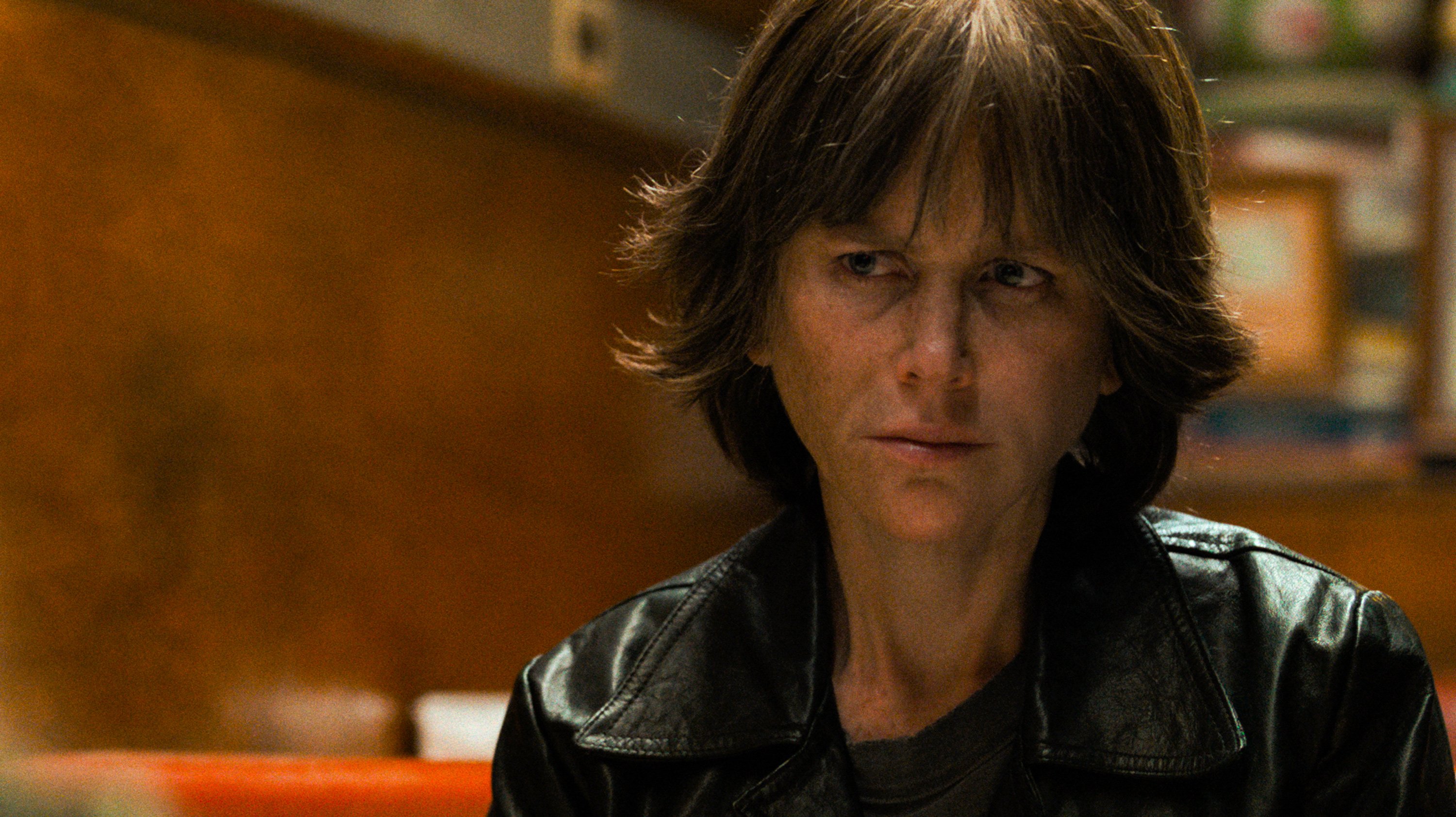All the Write Moves: Velvet Buzzsaw
February 12, 2019
Cinematic satire has become something of a lost art. During the so-called “age of irony” in the 90s, the notion of presenting exaggeration as a means of revealing hypocrisy (or other social foibles) became somewhat redundant. Close to two decades later, snark has become thoroughly ingrained into popular culture, further diminishing the impact of (and appetite for) genuinely satirical films. Nonetheless, every so often a bold filmmaker revives this once-venerated genre, whether it’s Boots Riley with last year’s wild Sorry to Bother You or Dan Gilroy with the current Velvet Buzzsaw.
Set in Los Angeles’ fine-art scene, Velvet Buzzsaw explores what happens when a cache of powerful work created by an unknown artist is accidentally discovered. First there’s the ambitious, wannabe art dealer who sees the work as her ticket to stature and wealth. There’s her boss, a cold-blooded veteran art dealer, who sees the work as a source of easy money since the artist cannot participate in the windfall. Then there’s a critic who sees the work as an opportunity to write a masterpiece of analysis and interpretation. And so on. The movie is predicated on the assumption that everyone in the art world reacts exactly the same way to the work in question, which touches on such troublesome ideas as the nature of subjectivity.
How writer-director Gilroy elevates his story to a satirical level is by telling the whole story through the unlikely prism of supernatural horror. Exposure to the dead man’s art kills people. Once the whole thing plays out, Gilroy arrives at roughly the following thematic statement: art is pure until it is commodified, at which point it becomes something so impure as to be evil. Given that Gilroy has made his career in Hollywood filmmaking — arguably the most commodified art form in the world — he has some credibility when investigating this terrain.
Ironically, Velvet Buzzsaw is itself subject to a wide range of interpretation, as evidenced by its mixed-to-positive critical reception. Where some viewers see a thoughtful meditation on worthy topics, others see an undisciplined attempt at profundity. Noting that both of these reactions ring true underscores Velvet Buzzsaw’s idiosyncratic nature. All of which makes the movie an interesting one to investigate from the perspective of screenwriting methodology.
Getting to Know You
Gilroy has mentioned that the work of Robert Altman was influential on his construction of Velvet Buzzsaw. Never is that more apparent than during the opening sequence, which unfolds at a convention where most of the major characters intersect.
In Altman’s ensemble films, viewers often had to analyze crowded scenes in order to determine which information was important, even though Altman used clues — pausing a roving camera shot here, raising a particular audio track there — to suggest which onscreen elements were significant. Gilroy emulates, but also deviates, from this approach. During the opening sequence of Velvet Buzzsaw, he regularly interrupts ensemble work with extended two-person exchanges, thereby clarifying for viewers which dynamics and lines are important.
Two important lessons can be gleaned from this. First, putting all of your major characters together can be a powerful way to introduce them, because doing so emphasizes context and relationships. From the opening of Velvet Buzzsaw, we quickly learn that everyone is involved in the art world, and that everyone has an agenda related to his or her status in that world. That effectively sets the scene for what follows.
The other important lesson pertains to homage. Were Gilroy a lesser filmmaker, he would have mindlessly imitated Altman. Instead, he borrowed methodologies that mesh with his own original intentions. Borrowing in the service of innovation is creatively valid, whereas mere imitation is not.
Takeaway: When paying homage, build on the work you reference.
Find a Nexus
In some ensemble films, priority is usually placed on one character with regards to thematic importance. Velvet Buzzsaw has at least three characters who seem like protagonists. Jake Gyllenhaal plays art critic Morf Vandewalt, the character who provides our way into the world of the movie. The way his reviews launch and sink careers reveals the scope of his influence in this story. Rene Russo plays veteran art dealer Rhodora Haze, whose backstory connects to the film’s title, since she once belonged to a punk rock band called Velvet Buzzsaw. And Zawe Ashton plays Josephina, the wannabe impresario who finds the cache of artwork that kicks the story into motion, and has complicated relationships with both Morf and Rhodora.
Since the protagonist of a movie is usually the person whose choices drive action from beginning to end, none of these characters meet that criteria. Yet Josephina performs a narrative function that’s just as important. She is the nexus. She personifies the movie’s themes, even often articulating many of them through dialogue. “I’m through dating artists,” she says early in the picture. “They’re already in a relationship.” Later, she complements that remark with something even more philosophical: “What’s the point of art if nobody sees it?”
These lines address core concepts with which Gilroy wrestles throughout Velvet Buzzsaw. Can we reconcile art’s role as self-expression with our societal decision to place monetary value on certain art? If art is personal expression — the offspring of the relationship to which Josephina refers — then does art lose its true purpose once it changes hands? These unanswerable questions are fascinating to consider, and Gilroy associates them with just the right character; a striver seeking status in a realm whose dimensions she doesn’t fully understand.
Takeaway: Making one character a vessel for theme helps provide focus.
Welcome to Weirdness
If you’re writing a movie that is not completely supernatural, the matter of when to introduce supernatural elements is tricky. For context, consider that a monster movie usually (but not always) begins with a monster attack, and that a movie about magic usually (but not always) begins with something magical. In that way, audience expectations get calibrated properly right from the beginning. A movie like Velvet Buzzsaw, which begins realistically before edging into supernatural terrain, faces different storytelling challenges.
Setting aside subtler cues that Gilroy employs, such as a creepy opening credits sequence, spooky music, and the otherworldliness provided by art objects that appear onscreen, Gilroy doesn’t get overtly weird until Josephina enters the dead artist’s apartment. (Minor spoilers follow). While Josephina examines art in one room, a painting in another room spontaneously combusts. This establishes that the dead man’s art is full of dark energy. Gilroy hits this marker at the 20-minute point in his film’s two-hour running time, so it falls late in Act One.
While figuring where to place this sort of marker is not an exact science, anywhere in Act One seems as if it would be acceptable to most audiences. Generally speaking, it is challenging for viewers to accept a major change in tone once a movie reaches cruising altitude, although of course there are famous exceptions. Hitchcock’s Psycho comes to mind. In the case of Velvet Buzzsaw, Gilroy wanted his viewers to accept multiple supernatural events, so established that aspect of the movie early. Had he waited much longer, he would have risked alienating audiences in one of two ways. Those looking forward to supernatural elements might have grown impatient, and those expecting a realistic movie might have gotten lulled into enjoying a particular sort of experience, only to become annoyed when the nature of the experience changed.
Takeaway: State your stylistic intentions early.
Written by: Peter Hanson
Peter Hanson is a Los Angeles-based writer, filmmaker and teacher. He directed the screenwriting documentary Tales from the Script, and he teaches at Pepperdine University and UCLA Extension. He provides script consulting at www.GrandRiverFilms.com.



